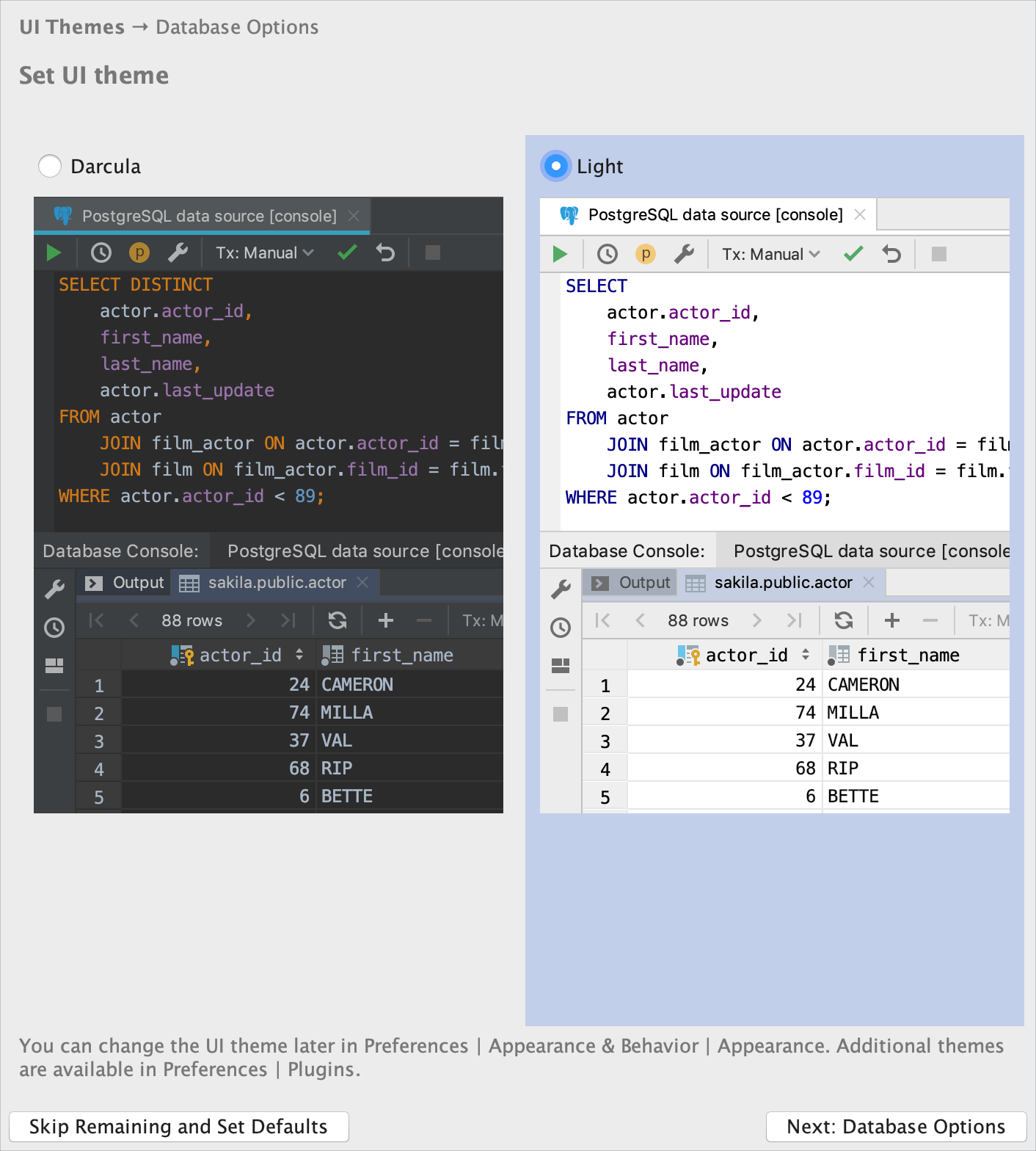
#Datagrip run sql file install#
Ok, let’s dive in and get DataGrip installed and connected to a YugabyteDB cluster! Step 1: Install a Local YugabyteDB Clusterīefore we get into DataGrip, you’ll need to setup YugabyteDB and install a sample database. JetBrains offers a 30 day free trial, so you can try all the features before deciding if you’d like to sign on for a commercial subscription, which is very reasonably priced. Additional Features – DataGrip also has a query console, diff viewer, import/export wizards, VCS, and ER diagramming capabilities.Writing SQL – DataGrip boasts a smart text editor, code completion, automatic code generation, code analysis, refactoring, and a variety of visual themes to suit your preferences.Navigate to the symbol action which lets you find objects by their name.


Yugabyte’s SQL API (YSQL) is PostgreSQL wire compatible. What’s YugabyteDB? It is an open source, high-performance distributed SQL database built on a scalable and fault-tolerant design inspired by Google Spanner.
#Datagrip run sql file how to#
In this post we’ll show you how to get DataGrip connected to a YugabyteDB cluster, use it to build a sample database, load it up with data and browse it. And because YugabyteDB is PostgreSQL compatible, getting DataGrip to work with a distributed SQL database is relatively simple.

DataGrip from JetBrains is a well-rounded, visual database tool that supports almost 20 SQL and NoSQL databases from a single interface. If you’re a database developer, you know the time saving value of an IDE in helping you create and navigate database objects, plus query and edit data from single UI.


 0 kommentar(er)
0 kommentar(er)
